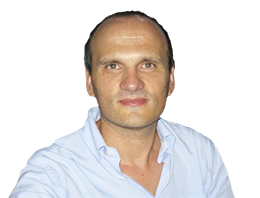Who’s in the list of your friends on social networking sites? True friends? People who you don’t know much? Total strangers? Should those sites offer a richer way of describing your relationship with each of them?
A research group at HP Labs has studied the effects of a richer classification on users, and their paper has been presented today at CHI 2008. I’ve discussed with one of the authors and he told me several interesting things:
Do we need more distinctions rather than the current "friend or not" in social networking sites?
“We do. Increasingly people are using social network sites as a way of collecting contacts from people they’ve met only once. I was at a reception once and met someone who added me to her friends list on her cell phone while I was standing there, after knowing me for all of five minutes.
Granovetter called these incidental contacts ‘weak ties’. They’re people you don’t know all that well, but they connect you to a bunch of people you don’t otherwise have access to. They’re still valuable for finding job opportunities and such – this is the kind of networking people have been doing long before social network sites.
But lots of people share personal details with their friends – like their home address, cell phone number, or intimate blog posts. Most of us have an ‘inner circle’ of true friends who we share these things with. Not everyone we meet belongs in this category.
Some people solve this problem by partitioning their personal and professional lives onto different sites. LinkedIn, for instance, has a very business networking vibe.
But this idea of privileging a select few is already being adopted in more personal social networks. For years now, LiveJournal has allowed users to mark some blog posts as ‘private’ and only viewable by friends. Facebook lets people designate some friends as second-class, only able to see a ‘limited profile’.
Facebook has been evolving a fairly sophisticated set of tools for people to organize the hundreds of ‘friends’ they collect on the site. Users can annotate friendships by context (e.g. coworkers, classmates), and they can now put them into lists to make it easier to find people. They’ve even recognized that some people’s activities might be more interesting to you than others’, effectively saying you want to pay more attention to certain people.
There may also be opportunities for social network services to guess at how close you are to your friends based on how often you communicate with them, the way Google shows your ‘most frequent contacts’ in their mail service.”
Which site did you study and what was the effect of having more distinctions in describing relations with other users?
"We studied Essembly.com, an online community of people interested in (mostly American) political issues. Users can post and vote on ‘resolves’ – controversial statements about topics like abortion, foreign policy, or philosophy. People’s profiles are made up of their votes, so you can see what their political beliefs are. Users are encouraged to link to their real-life friends but also to ideological ‘allies’ and ‘nemeses’ – people whose worldviews seem especially similar or dissimilar.
It appeared that people were genuinely using these relationships as the site suggested -allies tend to agree on issues more often than friends, and much more often than nemeses. Which makes sense: in real life your friends are generally likely to be similar to you, but people still have friends from the other side of the ideological spectrum.
The three networks overlapped relatively infrequently: people tend to link to allies and nemeses who are not also their friends. The allies network also provides a sort of ‘weak tie’; in other words, it looks like allies bridge different social circles better than friends. If you want to disseminate information, it’s easier to reach people through the allies network.
We don’t know for certain what the effects are because we couldn’t do a controlled experiment where we disabled the other two networks. But it does appear that most active users participated in at least two of the three networks.”
How did you reach these findings with users? Did you find any surprising behavior?
“We analyzed 1.4 million votes on the site over a 16-month period, using anonymized data provided by Essembly. We considered about half a million scenarios where a user voted on a resolve and about half a million more where he/she could have voted on a specific resolve but didn’t. In each instance, we looked at how many of the user’s friends, allies, and nemeses had voted on the resolve.
When users log into Essembly, the home page lists resolves that their friends, allies, and nemeses voted on. It appears that people are more likely to vote on a resolve if one of their friends voted on it already. Allies didn’t seem to have much influence – even though users were more likely to agree with them, they didn’t seem to impact whether users actually voted on a resolve.
Perhaps the biggest surprise was that if only nemeses had voted on a resolve already, users were less likely to vote on it. We had thought that people would feel motivated to go oppose their nemeses but this turned out not to be the case.”
Do you think that allowing more distinctions will make it easier to predict our behavior on-line?
“Even though Essembly has lots of data on your ideological beliefs, and might be able to predict how you’ll vote on a resolve, it looks like the behavior of your friends is a more compelling motivator. Just like Amazon might be able to recommend items using collaborative filtering, but you might be more compelled by a friend’s personal recommendation.
I think sites like Facebook are certainly going to try and mine this data, especially as people volunteer more fine-grain information about their networks. There’s great value to online advertisers to do more targeted viral marketing, and there’s been a good deal of research in this area.”
For more details about the research, you could also take a look at the two figures below and the captions that explain them.
© 2008, Il Sole 24 Ore. Web report from CHI 2008.

FIGURE 1. Ideological similarities vs. distance in the friends, allies, and nemeses networks (for example, friends with distance 1 are a user’s direct friends, distance 2 is friends-of-friends, etc.) Users’ similarity decays as they get further and further apart in both the friends and allies networks, but the similarity in the nemeses network oscillates, confirming the old adage “the enemy of my enemy is my friend”.

FIGURE 2. A portion of the decision tree derived through the analysis of users’ anonymized data, showing posterior probabilities of voting on resolves. People are most likely to vote on resolves that multiple friends have voted on already, and least likely to vote on resolves that only nemeses voted on.


